Content can be downloaded for non-commercial purposes, such as for personal use or in educational resources.
For commercial purposes please contact the copyright holder directly.
Read more about the The Creative Archive Licence.
Description
Story: Cliff Benson is the Founder and Managing Director of Sea Trust, based in Goodwick. Over the years he has been involved in numerous surveys, including the one he recounts below.
Cliff asks that anyone wanting to use/cite this work contacts him beforehand to ask for permission. Cliff can be contacted at: [email protected].
“Every time Sea Trust ventures out on one of our surveys either on a small boat like the Cartlett Lady or on the Stena Europe, there is a thrill of anticipation as we make our way offshore. Out from the Pembrokeshire coast we have the meetings of the southern Irish Sea, The North Atlantic/Celtic Sea and the Bristol Channel, their waters mixing nutrients, boosting the food chain from bottom to top, from microscopic plankton to great whales.
But nothing is static in the ocean and in these times of climate change, things can move surprisingly quickly as we naturalists have witnessed through the early years of this new millennium. It is only by getting out there as much as possible that these phenomena can be seen and recorded and compared year on year, the more surveys and the more years the better.
The morning of Sunday 27th August 2017 dawned clear and calm. Hardly a breath of wind stirred the flags in the marina as we came together for a Cartlett Lady survey out to the Celtic deep, 30 miles SW of Milford Haven. As we cleared the Haven out into the open sea, it was flat calm raising our hopes of a spectacular day... but little did we know just how good!
My cunning plan was to head out South West towards the Celtic Deep in the hope of connecting with Fin Whales, as we have in the past. And so, we set off and before long we had a pod of feeding dolphins ahead of us, probably around fifty. After recording them we pressed on.
With the Cartlett Ladies powerful engines pushing us on, we were soon 25 miles out in the Celtic Sea. We slowed down to a dawdle , cruising the area where we had located the Fins in the past. With keen eyed skipper Andy at the wheel. we scanned out to the horizon for blows. Funnily enough our next find was a small Blue Shark, its dorsal and tail fin creating a small wiggly wake as they broke the silken surface. A little while later, the surface erupted as dark shapes broke the surface, a school of big tuna (that I first mistook as dolphins), in a feeding frenzy.
As if to top it, our next surprise was a strange blob that turned into a Leatherback Turtle, a tantalizingly brief view but as usual ace photographer Ken was on it before it disappeared into the depths. Next was more Dolphins at least a couple of hundred, that had attracted at least fifty Gannets who were sitting obviously sated, showing snow white on the ultramarine surface.
A little further on, another big Tuna feeding frenzy ripped that seascape apart and Ken was on it again. I was stood on the bow of the Cartlett lady when just next to me a huge bluefin Tuna rocketed out of the water! I saw its fishy eye staring, its flashing silvery sides and hooked and serrated fins, truly a gothic monster of the deep. There and gone in a split second,. On a a magical moment that will live with me forever!
After an hour or so it was time to head back in an easterly course, back towards the Haven. We encountered pod after pod of dolphins along the way, to the point Sophie, had to relieve data recorder Sophia from recording them and in turn, Fenela relieved Sophie, as the sightings came thick and fast. Five here, ten there and fifty and on and on. Unsurprisingly, we were all pretty made up with the trip but I was a little disappointed at failing to connect with the Fin Whales.
Skipper Andy spotted it first. On a brief glance I was convinced we had a Fin Whale as the mouth broke the water then the rostrum and its long back , followed by the fin as it submerged again. It disappeared for several minutes as we circled slowly, all eyes peeled trying to relocate it. Of course, it came up where none of us expected it. I managed to get off a couple of pics and we slowly gained on it, surfacing a few more times and giving more photographic opportunities before deep diving again. Thankfully the subsequent views were good enough along with the absence of any blows, to I.D. it as a Minke. A very big Minke none the less, and with quite a substantial dorsal fin!
The Common Dolphins kept on coming as we hove into sight of the Milford Haven. Skomer and Skokholm to port side and the refinery chimneys to starboard. It had been an action-packed trip thanks to the wonderfully calm seas and we were all tired but contented as we made our way up the waterway passing the LNG and oil refineries with their huge chimneys and attendant tankers. As we approached and entered the Neyland Marina, Andy slotted us into our berth and son Jordan made us fast. What a day, what a boat, what a skipper what a team and best of all what incredible wildlife, all observed and recorded, Team Sea Trust at its best!
The Bluefin Tuna are a relatively new phenomena only recorded in our waters around the last decade. Its probable that sardines and other prey fish are moving into our more northerly waters bringing the Tuna with them. As our waters warm we are recording increasing numbers of perhaps less welcome creatures like Portuguese Men o’ War, qiute rare until the past few years. What next? Flying Fish, Marlin and Swordfish. Perhaps the notorious Bull Shark responsible for the majority of attacks around the warmer waters of the globe.
Our Oceans contain over 90% of our biodiversity. They are interconnected, only temperature and depth are the segregating factor for many species, the only borders imaginary human ones. There is little in the way of robust protection. Ownership of inshore waters is often disputed, hardly policed. International waters are open to exploitation by anyone with the greed and technology to grab the spoils, whether that be fish or mineral. Whales or Manganese nodules.
It is unlikely we, as small marine conservation groups, can have much effect in preventing much of this although we can try. We have a responsibility as local groups to work together, monitor and look after our local waters for future generations.”
Description of photos: All photos were taken on survey with Sea Trust. 1) Surveyers aboard Cartlett Ladies, during the survey. 2) Common dolphins (Delphinus delphis) recorded as part of the survey. 3) Bluefin tuna (Thunnus thynnus) recorded as part of the survey. 4) Leatherback turtle (Dermochelys coriacea) recorded as part of the survey. 5) Bluefin tuna (Thunnus thynnus) recorded as part of the survey. 6) Minke whale (Balaenoptera acutorostrata) recorded as part of the survey. 7) Surveying common dolphins (Delphinus delphis).
You can learn more about the work Sea Trust do here - https://seatrust.org.uk/.

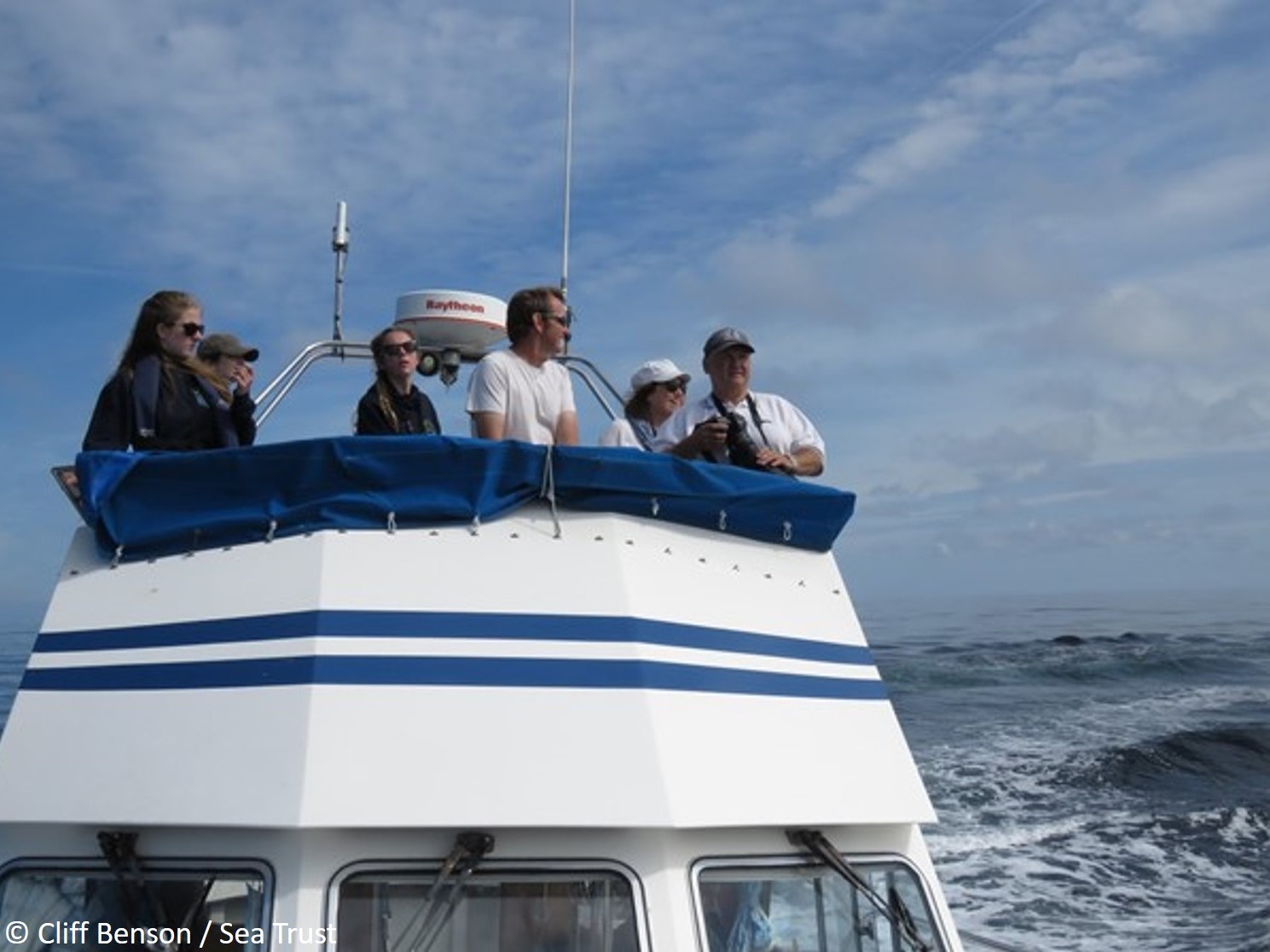

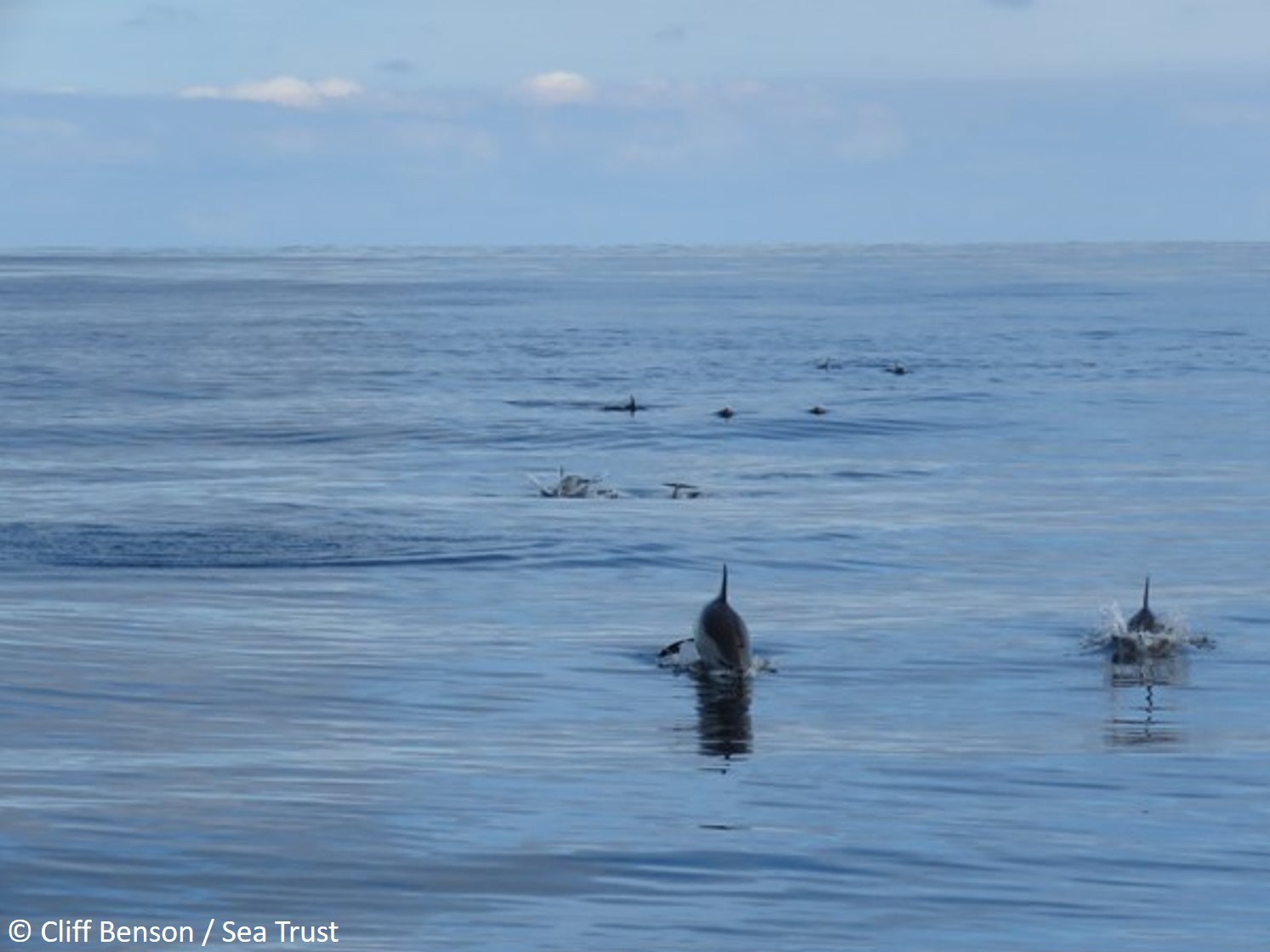

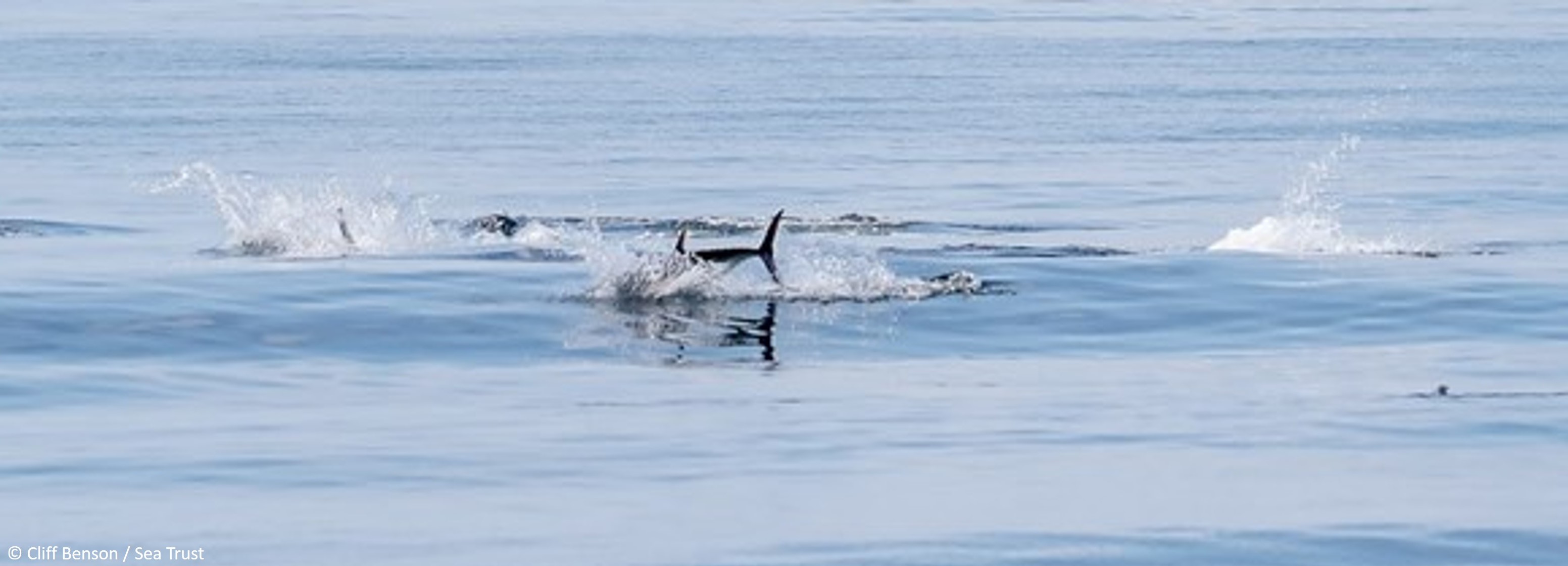





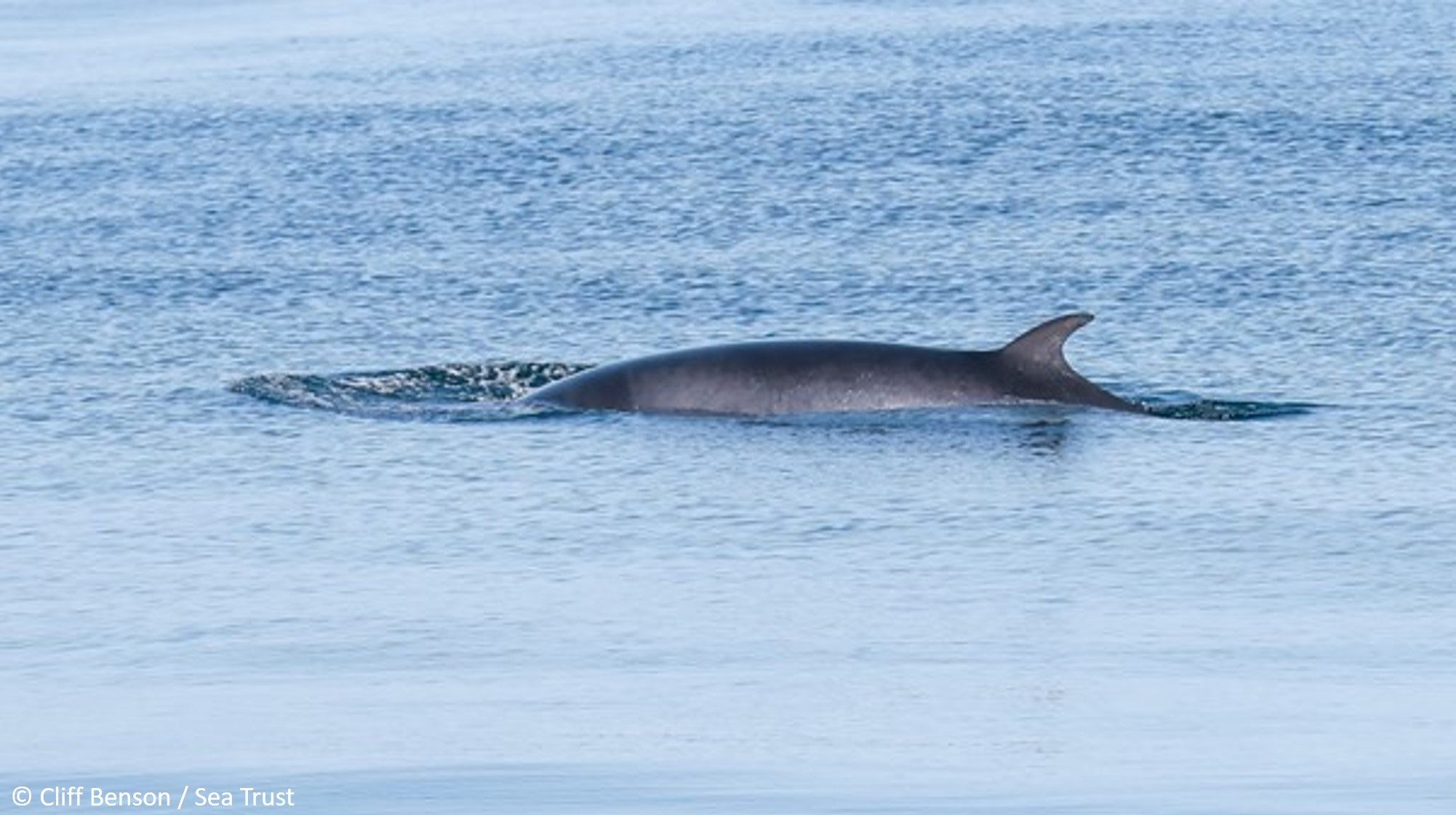

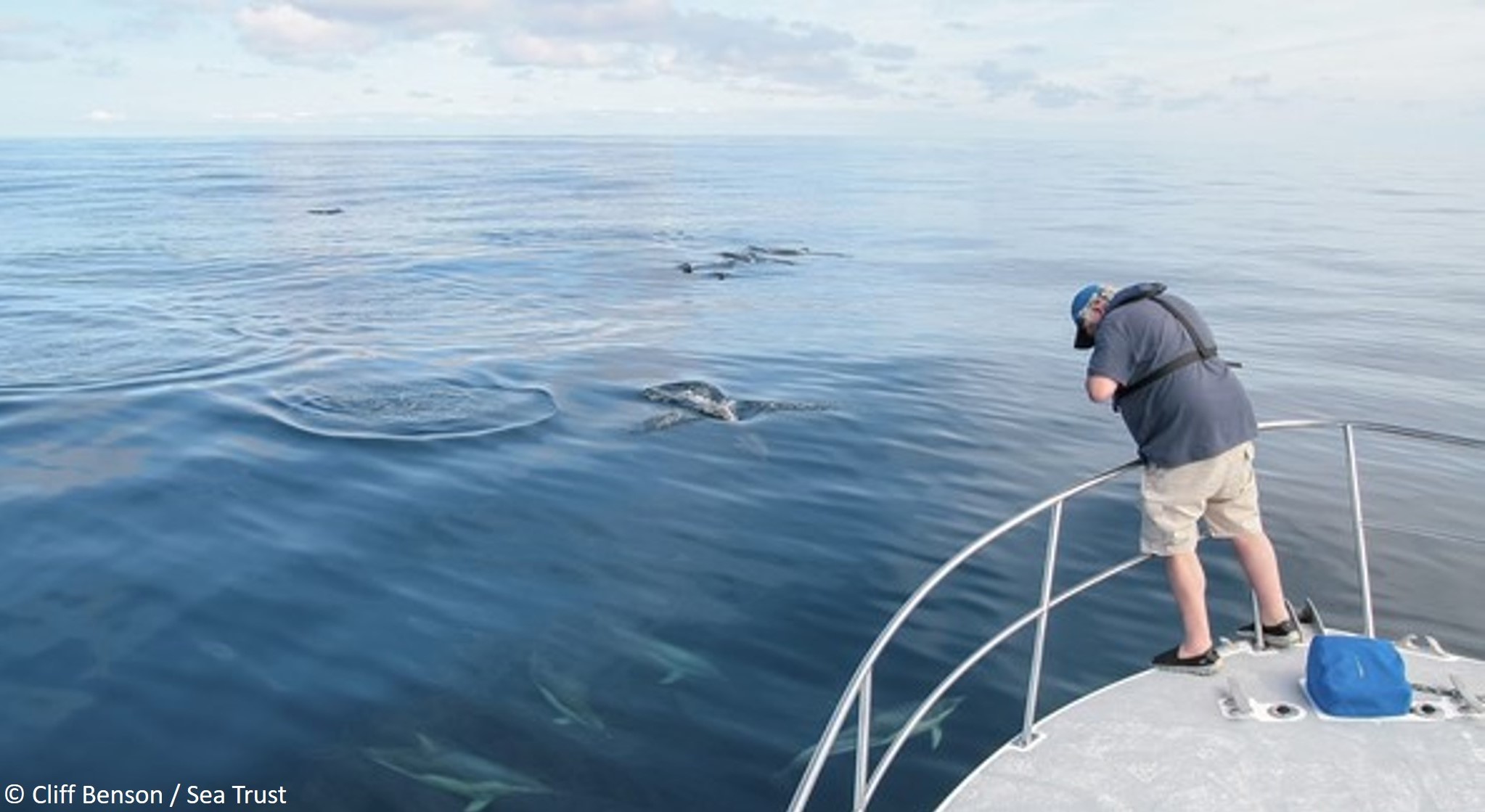


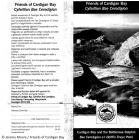

Do you have information to add to this item? Please leave a comment
Comments (0)
You must be logged in to leave a comment